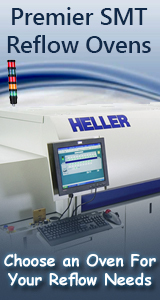ASHCROFT pressure transmitter is one of the most commonly used transmitters in industrial applications. It is widely used in a variety of control environments, involving water conservancy and hydropower, railway transportation, intelligent building, production automation, aerospace, military, petrochemical, oil wells, electric power, ships, machine tools and pipelines.

Figure 1: ASHCROFT Transmitter CX8MB242P25IWL
ASHCROFT pressure transmitter is an electronic device that senses the pressure signal and converts it into an available output electrical signal according to certain rules.
Now we will briefly introduce the principle and application of some common models.
1. Performance Index of ASHCROFT Pressure Transmitter
Index
Specifications
Measuring Medium
Liquid or gas (no corrosion to stainless steel shell)
Range
0-10MPa
Accuracy
0.1% FS, 0.5% FS
Stability
Better than 05%FS Per Year; Better than 0.1% FS Per Year
Output Signal
RS485, 4 ~ 20mA
Overload Capacity
150% FS
Zero Temperature Coefficient
±0.01%FS/℃
Full-Femperature Coefficient
±0.02%FS/℃
Proof Grade
IP68
Ambient Temperature
- 10 ℃~ 80 ℃
Storage Temperature
- 40 ℃ ~ 85 ℃
Power Supply
9V ~ 36V DC
Structure Material
Shell is stainless steel 1Cr18Ni9Ti
Sealing
Fluorine Rubber
Diaphragm
316L Stainless Steel
Cable
φ7.2mm polyurethane cable
2. Wiring Method of ASHCROFT Pressure Transmitter
Transmitter wiring has always been one of the most consulted problems in the purchasing process. Many customers don't know how to connect the transmitters.
In fact, wiring of various transmitters are basically the same. There are usually 2-wire type, 3-wire type, 4-wire type, and even 5-wire type of pressure transmitters.
ASHCROFT pressure transmitter adopts a 2-wire connection. Generally, users connect the device by themselves.
One wire is connected to the positive terminal of the power supply, and the other wire, which is, the signal wire, is connected to the negative terminal.

Figure 2: Diagram of 2-wire transmitter wiring (Source realpars.com)
The 3-wire type pressure transmitter is based on the 2-wire type, just with one more wire. The added wire is directly connected to the negative terminal of the power supply, which requires a little more work than the 2-wire type.
For 4-wire type ASHCROFT pressure transmitter, there are two power input terminals, and two signal output terminals. Most of them are voltage output. Transmitters with 4 ~ 20mA output are called pressure transmitters, most of their wiring is 2-wire type.

Figure 3: Diagram of 4-wire transmitter wiring (Source realpars.com)
Some of the signal outputs of pressure transmitters are not amplified, with the full scale of output only tens of millivolts, while some pressure transmitters have internal amplification circuit, and the full scale output can be 0 ~ 2V.
As for wiring to the display instrument, it depends on the range of the instrument. If there is a gear suitable for the output signal, the output can be measured directly, otherwise a signal adjustment circuit needs to be added.
There is little difference between 5-wire pressure transmitter and 4-wire pressure transmitter, but there is few 5-wire pressure transmitters in the market.
3. Thread Types of ASHCROFT Pressure Transmitter
Pipe thread is mainly used for the connection of pressure pipeline, and there is tight cooperation between its internal and external threads. Two kinds of pipe threads of pressure transmitter are parallel pipe and taper pipe. Nominal diameter refers to the diameter of the pressure pipe to be connected. The major diameter of the thread is obviously larger than the nominal diameter. Nominal diameters of English thread are 1 / 4, 1 / 2, and 1 / 8.
There are many kinds of threads of pressure transmitters, and NPT, PT, G, M are the pipe threads most commonly used.
3.1 Thread NPT
NPT is the abbreviation of National (American) Pipe Thread. It belongs to the 60 degree taper pipe thread in American National Standard. It is used in North America.

Figure 4: Sketch of thread NPT (Source eastsensor.com)
3.2 Thread PT
PT is the abbreviation of Pipe Thread. It is 55 degree sealed taper pipe thread. It belongs to Wyeth ASHCROFT pressure transmitter thread family of USA.
Thread PT is mostly used in European and Commonwealth countries. PT is commonly used in water and gas pipe industry, the taper ratio of that is 1:16.
3.3 Thread G
G is a 55 degree non threaded sealed pipe thread, belonging to Wyeth pressure transmitter thread family. The mark G represents cylindrical thread.

Figure 5: Sketch of G thread (Source eastsensor.com)
3.4 Thread M
M means ISO (International Organization for Standardization) metric thread, for instance, M20*1.5 means that the diameter is 20 mm and the pitch is 1.5 mm. If the customer has no special requirements, the thread of pressure transmitter is generally M20*1.5.
In addition, the 1 / 4, 1 / 2 and 1 / 8 marks on the thread refer to the diameter of the thread size. Insiders usually use Fin to call thread size, one inch is equal to 8 Fin, 1 / 4 inch is 2 Fin, and so on. The division of 55 and 60 degrees is according to the function, commonly known as pipe circle. The thread is made of a cylindrical surface.
3.5 Pipe Cone
ZG is commonly known as pipe cone, that is, the thread is made of a round cone surface, which is generally used in water pipe pressure joint.
The metric threads are represented by pitch, while American and British threads are represented by the number of threads per inch. This is the biggest difference of ASHCROFT pressure transmitter thread. Metric thread is 60 degree equilateral profile, while English thread is 55 degree isosceles profile, and American thread angle is 60 degree. Metric unit is used for metric screw thread, and English unit used for American and British screw thread.

Figure 6: ASHCROFT Transmitter IXLdp +/-0.25"WC
4. Unavoidable Inaccuracies of ASHCROFT Pressure Transmitter
When choosing a pressure transmitter, we should consider its comprehensive accuracy, which is affected by many factors.
Here we will explain four unavoidable inaccuracies, which are the initial errors of the transmitter.
4.1 Offset Error
Because the vertical offset of ASHCROFT pressure transmitter is constant in the whole pressure range, the change of converter diffusion and laser adjustment correction will produce offset error.
4.2 Sensitivity Error
The error is proportional to the pressure. If the sensitivity of the device is higher than the typical value, the sensitivity error will be the value of increasing function of the pressure. And if the sensitivity is lower than the typical value, the sensitivity error will be the value of decreasing function of the pressure. This error is due to the change of diffusion process.

Figure 7: ASHCROFT Transmitter KM41 0-400bar
4.3 Linear Error
Linear error has little influence on ASHCROFT pressure transmitter. The cause of the error is the physical nonlinearity of the silicon wafer, but for the transmitter with amplifier, the nonlinearity of the amplifier is also included. The linear error curve can be concave curve or convex curve.
4.4 Lag Error
In most cases, the lag error of the pressure transmitter can be ignored because of the high mechanical stiffness of the silicon wafer. Generally, it is only necessary to consider the lag error when the pressure changes greatly.
4.5 Error Correction
Though the above four errors of ASHCROFT pressure transmitter are unavoidable, users can still choose high-precision production equipment and adopt some techniques to reduce them.
For example, you can make a error calibration after received a transmitter in the factory mode, so as to reduce the error as best as possible to meet your needs.
5. Mounting of ASHCROFT Pressure Transmitter
Usually, the damage of pressure transmitters in high temperature melting equipment is caused by its improper mounting position.
If the transmitter is forced to be mounted in small hole or irregular hole, the vibration film of the transmitter may be damaged by the impact.
It is helpful to select appropriate tools to process the hole to control the size.
In addition, the appropriate installation torque is conducive to the formation of a good seal, but excessively high torque is easy to cause the slippage. To prevent this phenomenon, you should first coat the thread of the transmitter with anti stripping compound before installation.
5.1 Correct Installation Method
Verify the frequency response value of the pressure transmitter under normal atmospheric pressure and standard temperature through appropriate instruments.
Verify the coding of the pressure transmitter and the corresponding frequency response signal.

Figure 8: ASHCROFT Transmitter IXLdp 150"WC
5.2 Determine the Specific Installation Location
The pressure transmitter must be installed at the cable joint.
Each cable shall be equipped with at least 4 pressure transmitters, and the distance between the neighbouring two pressure transmitters shall not be more than 200 m.
Install one at the beginning and one at the end of each cable.
Transmitters should be installed at the branch point of each cable. If two branch points are close (less than 100 m), only transmitter need be installed.
At the changing of cable laying mode (overhead and underground), a transmitter should be installed.
For the cable without branches, because of the consistent cable program of base line, the installation of pressure transmitter spacing is not more than 500 m, and the total number installed is more than 4.
In order to determine the fault point of ASHCROFT pressure transmitter, in addition to installing a pressure transmitter at the starting point, another one should be installed 150 ~ 200m away from which.
In a word, you should take economic and technical factors into account too. Install the transmitter if necessary.
6. Check the Dimension of ASHCROFT Pressure Transmitter
If the size of the mounting hole is not suitable, the thread of transmitters will be easily worn during the installation process, which will impair the sealing performance of the device, and make the transmitter fail to work normally, even cause security issues.
Therefore, you should choose suitable mounting hole (1/2-20UNF2B) to avoid thread wear. On the other hand, you need to check the mounting hole with special measuring instrument too, so as to make appropriate adjustment.
For more information, please visit https://okmarts.com/
Shop ASHCROFT Transmitters on OKmarts







